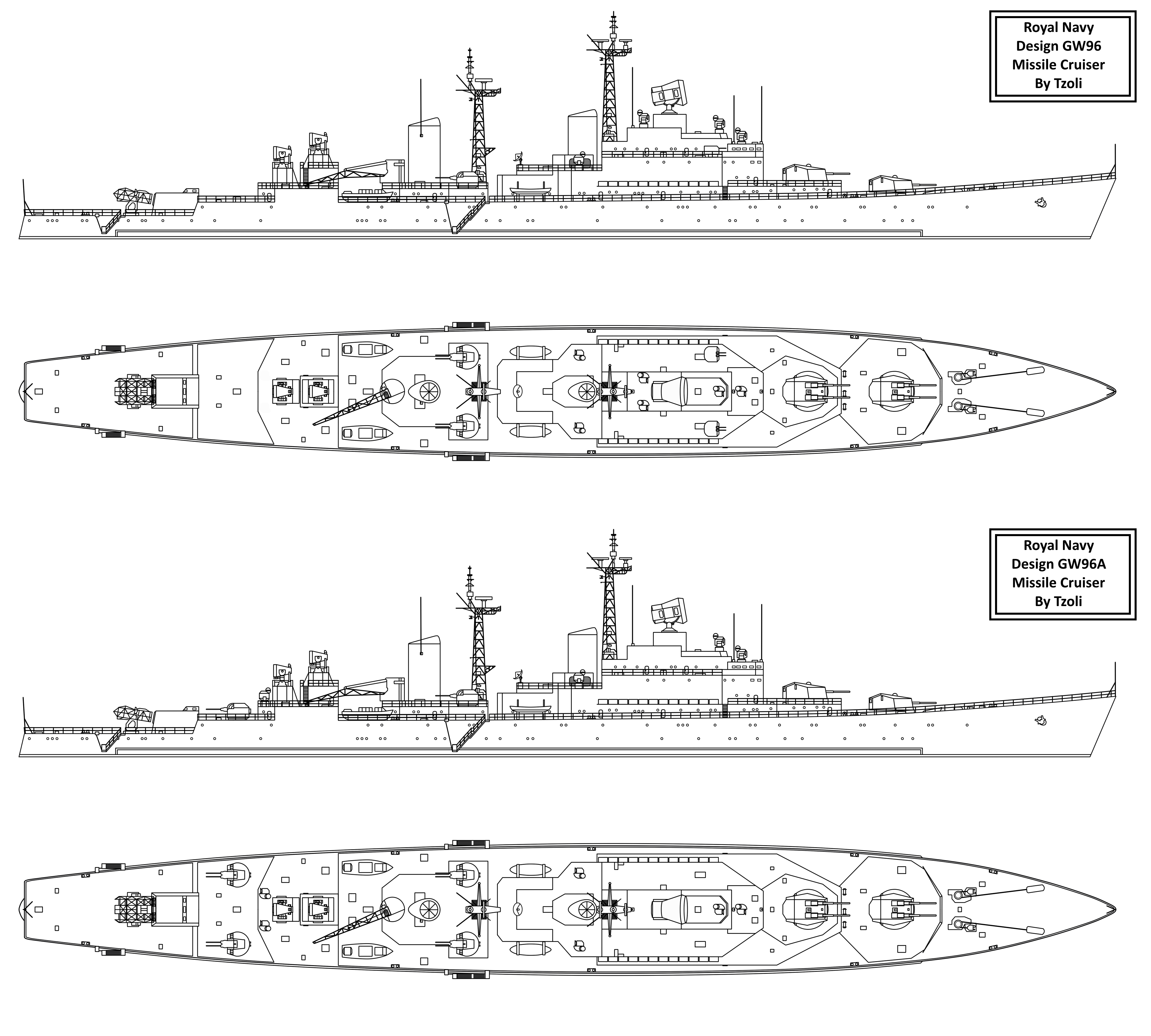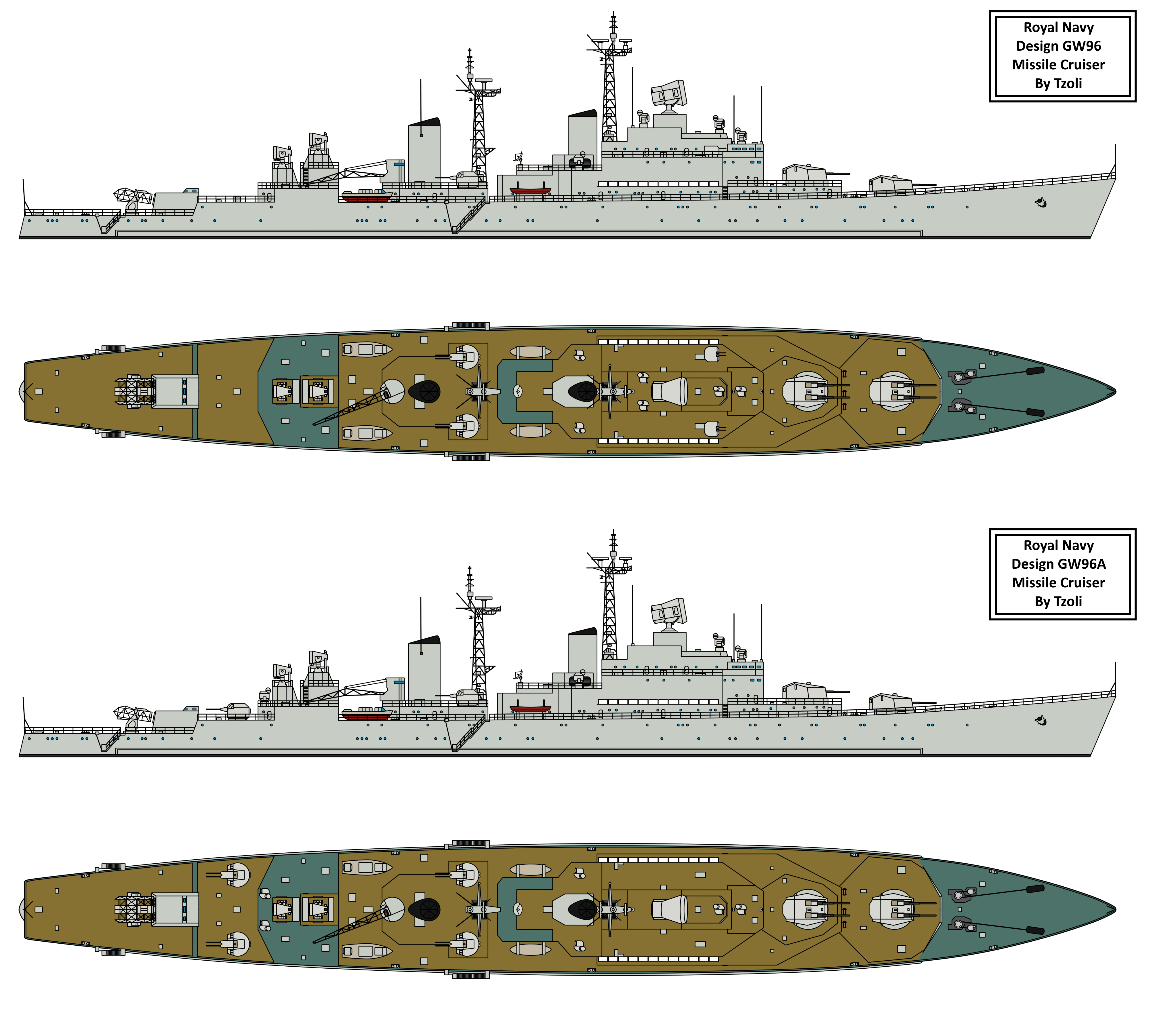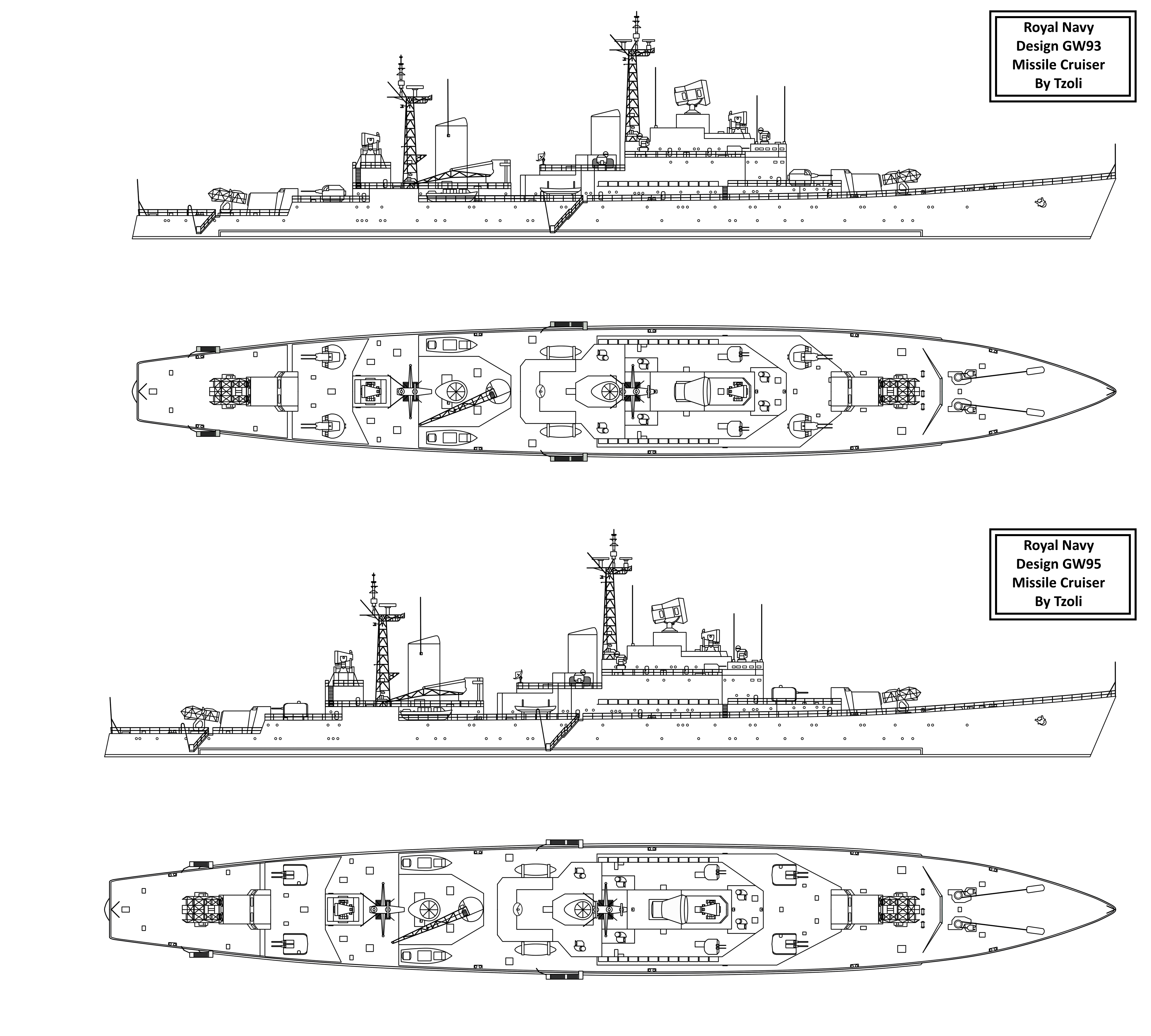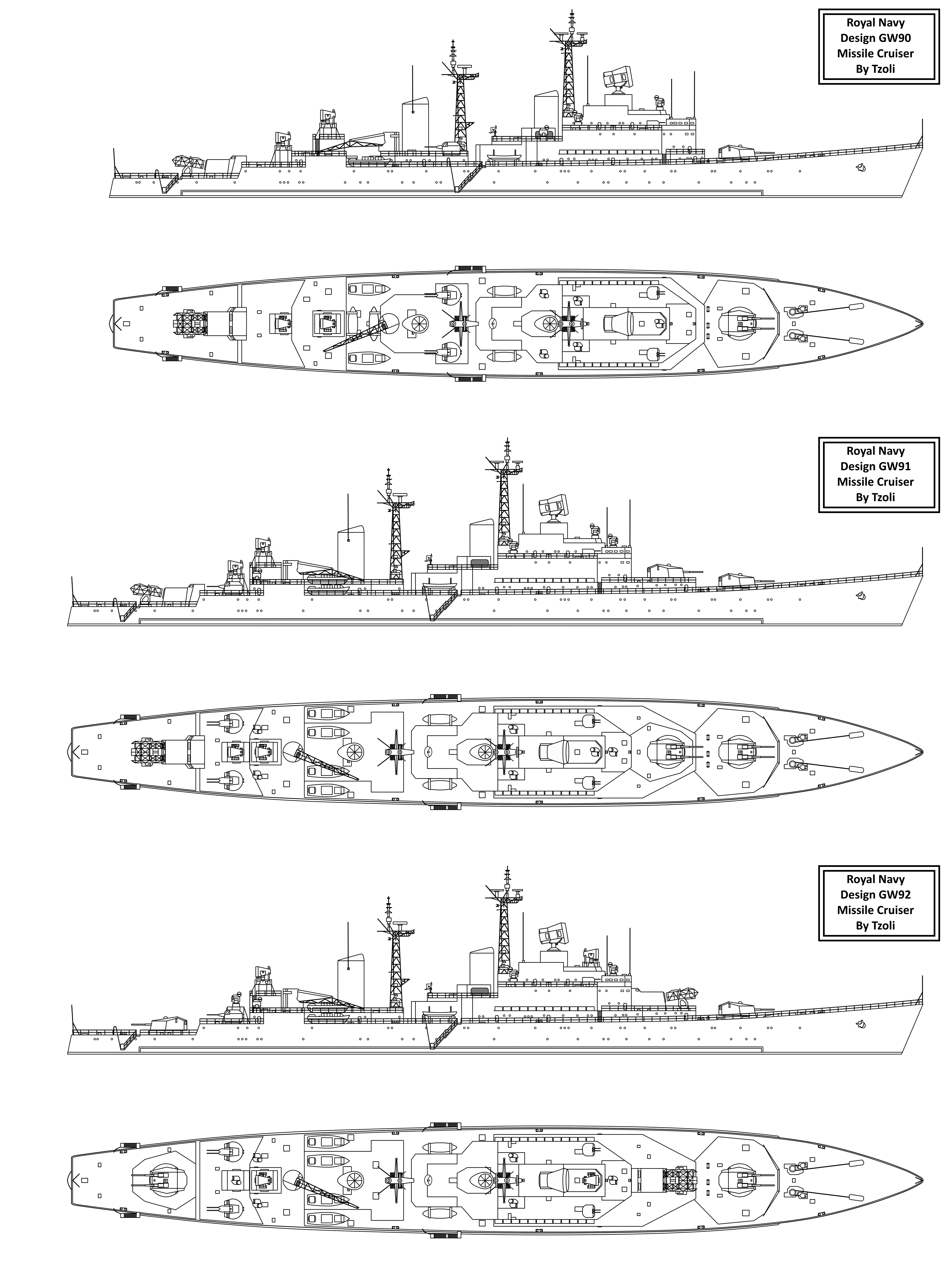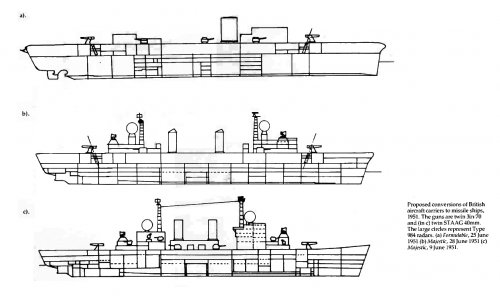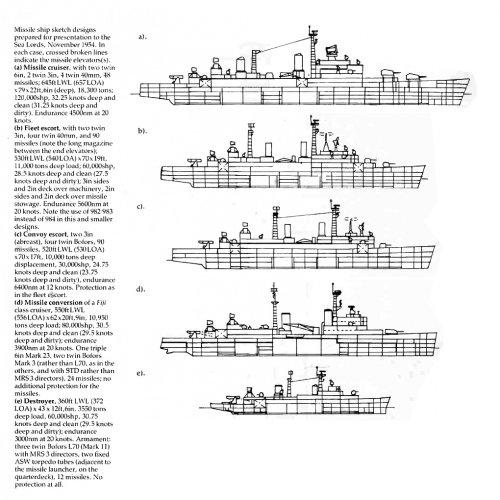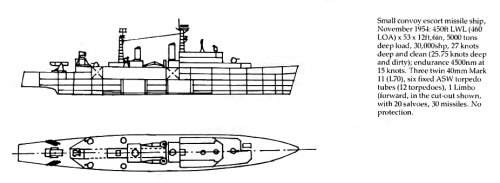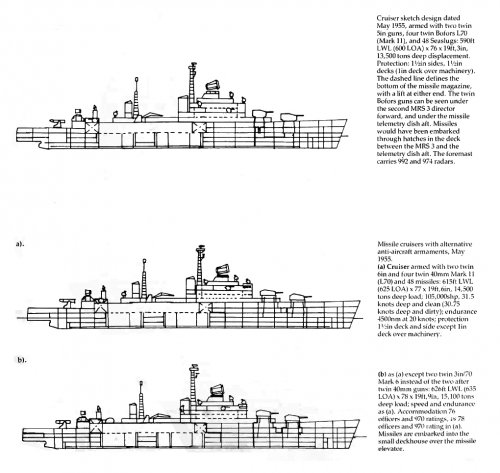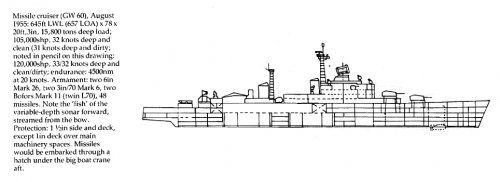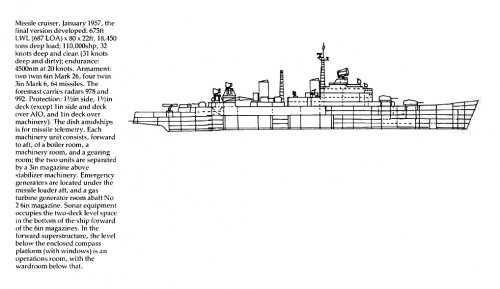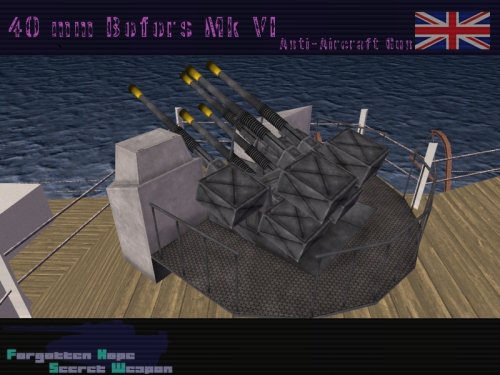- Joined
- 27 September 2006
- Messages
- 6,417
- Reaction score
- 6,822
Until the Type 22 frigate the Royal Navy did not follow the USN
in building ships with surface to air missile systems at both ends
like the Leahy and Belknap classes.
There seem to have been plans to do so, including by converting
the County class destroyers to have Seaslug launchers at both ends.
I assume that the need to have a gun mounting for fire-support and
limited non-hot war work always stymied these plans.
One for the excellent shipbucket artists, but I think a double SAM
equipped County or Type 82 would have looked very 60s. It is a
shame that there is no artwork anywhere.
UK 75
in building ships with surface to air missile systems at both ends
like the Leahy and Belknap classes.
There seem to have been plans to do so, including by converting
the County class destroyers to have Seaslug launchers at both ends.
I assume that the need to have a gun mounting for fire-support and
limited non-hot war work always stymied these plans.
One for the excellent shipbucket artists, but I think a double SAM
equipped County or Type 82 would have looked very 60s. It is a
shame that there is no artwork anywhere.
UK 75

